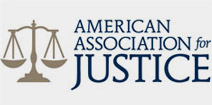By: Robert B. George, Esquire
[email protected]
When first enacted in 1980, Pennsylvania’s Divorce Code required a three-year separation period before a divorce could be obtained on no-fault grounds without consent. In 1988, the law was amended to reduce the waiting period to two years. Legislation to further reduce the waiting period, known as House Bill 380, was introduced in February, 2015, and secured approval from the House of Representatives in June of 2016.
This change, which took effect and became the new law in Pennsylvania on December 4, 2016, essentially means that a spouse involved in a no-fault Divorce needs to wait only one year after the filing and service of the Divorce Complaint before obtaining a divorce without the other spouse’s consent.
The attorneys at the Law Firm of DiOrio & Sereni, LLP are experienced and available to help you. Contact Robert B. George, Esquire at 610-565-5700, or send him an e-mail at [email protected].
Like what you see? Join our mailing list











